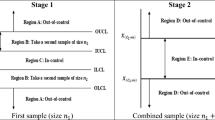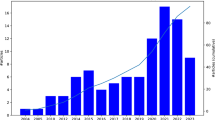Abstract
WearGuard is a direct marketer and retailer of uniforms and work cloths, which relies primarily on phone orders for sales. For this purpose it maintains a series of toll-free “800-number” lines, known as WATS lines, to receive its incoming calls. These lines are of several types, where each type serves a different portion of the country and has a different usage fee. In this paper we determine how many of each type of WATS lines should be employed. After defining the problem more completely, we develop a queueing model to describe the system and a dynamic program to solve the configuration problem to optimality. The model has been applied to the problem by WearGuard since 1984. We present an example and examine the sensitivity of the solution to variations in various parameters. We validate the model by comparing the results of this model to other approximate models.
Similar content being viewed by others
References
D.M. Lampbell, On the selection of numbers of servers for theN server-type problem, Technical Report No. 349, School of Operations Research and Industrial Engineering, Cornell University, Ithaca, NY (August 1977).
R.C. Larson, A hypercube queueing model for facility location and redistricting in urban emergency services, Comput. Oper. Res. 1 (1) (1974) 67–95.
R.C. Larson, Approximating performance of urban emergency service systems, Oper. Res. 23 (5) (1975) 845–868.
J.A. Morrison, Analysis of some overflow problems with queueing, Bell Syst. Techn. J. 59 (8) (1980) 1430–1434.
P.C. Santos, An optimization model for the configuration of incoming WATS Lines, unpublished M. S. Thesis, A. P. Sloan School of Management, Massachusetts Institute of Technology, Cambridge, MA (1984).
H.C. Tijms,Stochastic Modelling and Analysis: A Computational Approach (Wiley, Chichester, UK, 1986).
Author information
Authors and Affiliations
Additional information
Formerly: WearGuard, Director of Decision Support Systems, Longwater Drive, Norwell, MAmis 02061, USA
Rights and permissions
About this article
Cite this article
Blake, R.H., Graves, S.C. & Santos, P.C. A model for the configuration of incoming wats lines. Queueing Syst 7, 3–21 (1990). https://doi.org/10.1007/BF01158783
Received:
Revised:
Issue Date:
DOI: https://doi.org/10.1007/BF01158783




